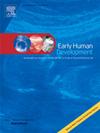新生儿压力量表的有效性和使用:综合评述。
IF 2.2
3区 医学
Q2 OBSTETRICS & GYNECOLOGY
引用次数: 0
摘要
背景:压力暴露是早产儿研究中的一个重要概念,具体表现为疼痛或皮肤破损程序的计数。目的:本综述旨在确定新生儿压力量表(NISS)在新生儿研究中的使用范围,并确定其预测性和并发有效性:采用综合综述的方法,使用 PubMed、CINAHL、PsycINFO 和 Embase 对文献进行系统检索,关键词为 "NISS "或 "新生儿压力量表"。对研究结果进行了叙述性综合:结果:29 篇文章被纳入综述,其中包括 2 项描述量表开发或调整的横断面研究、2 项实证研究协议和 25 项早产儿实证研究。对原始 NISS 的修改很常见,包括添加或排除特定压力源以及使用非加权分数。尽管不同研究的结果不一致,但有限的数据支持 NISS 的预测有效性,因为较高的 NISS 分数与大脑发育异常以及认知、运动和行为缺陷有关。有两项研究发现 NISS 分数与皮质醇之间存在并发关联:结论:NISS 可能是量化早产儿所经历的压力的有用工具;但是,只有有限的数据支持其预测性或并发有效性。在临床实践中,NISS 可以作为一种方法,使人们意识到婴儿的压力负担。还需要进行更多的研究来验证 NISS 中包含的特定压力源。本文章由计算机程序翻译,如有差异,请以英文原文为准。
Validity and use of the Neonatal Infant Stressor Scale: An integrative review
Background
Stress exposure, operationalized as a count of painful or skin-breaking breaking procedures, is an important concept for inclusion in studies of preterm infants. The Neonatal Infant Stressor Scale (NISS) was developed to also account for nonpainful and environmental stressors; however, validity of this measure is unknown.
Aims
The purpose of this review was to define the breadth of use of the NISS in neonatal research studies and determine its predictive and concurrent validity.
Methods
Using the methods for integrative review, a systematic search of the literature was conducted using PubMed, CINAHL, PsycINFO, and Embase with keywords “NISS” OR “Neonatal Infant Stressor Scale”. Study findings were narratively synthesized.
Results
Twenty-nine articles were retained for the review and included two cross-sectional studies describing development or adaptation of the measure, two protocols for empirical studies, and 25 empirical studies of preterm infants. Modifications to the original NISS were common and included addition or exclusion of specific stressors and use of unweighted scores. Although findings were inconsistent across studies, limited data support the predictive validity of the NISS, as higher NISS scores have been associated with abnormal brain development and cognitive, motor, and behavioral deficits. Two studies found concurrent associations between NISS scores and cortisol.
Conclusion
The NISS may be a useful tool to quantify stressors experienced by preterm infants; however, there are only limited data to support its predictive or concurrent validity. The NISS may be particularly useful as a method to bring awareness to the infant's stress burden in clinical practice. Additional research is needed to validate inclusion of specific stressors in the NISS.
求助全文
通过发布文献求助,成功后即可免费获取论文全文。
去求助
来源期刊

Early human development
医学-妇产科学
CiteScore
4.40
自引率
4.00%
发文量
100
审稿时长
46 days
期刊介绍:
Established as an authoritative, highly cited voice on early human development, Early Human Development provides a unique opportunity for researchers and clinicians to bridge the communication gap between disciplines. Creating a forum for the productive exchange of ideas concerning early human growth and development, the journal publishes original research and clinical papers with particular emphasis on the continuum between fetal life and the perinatal period; aspects of postnatal growth influenced by early events; and the safeguarding of the quality of human survival.
The first comprehensive and interdisciplinary journal in this area of growing importance, Early Human Development offers pertinent contributions to the following subject areas:
Fetology; perinatology; pediatrics; growth and development; obstetrics; reproduction and fertility; epidemiology; behavioural sciences; nutrition and metabolism; teratology; neurology; brain biology; developmental psychology and screening.
 求助内容:
求助内容: 应助结果提醒方式:
应助结果提醒方式:


